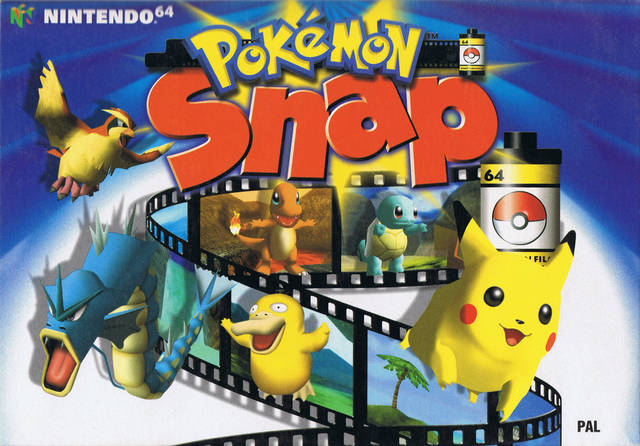Nintendo Patent Reexamination Ordered After Palworld's Success

In a significant development that could have ripple effects across the gaming industry, the Director of the United States Patent and Trademark Office (USPTO) has personally ordered a reexamination of a contentious Nintendo patent application. The application, which seeks to protect a gameplay mechanic described as a "summon character and let it fight" system, has been a focal point of debate among intellectual property experts and gamers, particularly in light of the ongoing discussions surrounding the hit game *Palworld*.
This unusual step by the head of the USPTO signals a high level of scrutiny for the patent, which many critics have argued is overly broad and attempts to claim ownership of a fundamental concept long established in the role-playing game genre. The decision injects a new layer of complexity into Nintendo's intellectual property strategy and the broader conversation about what can, and should, be protected in the world of video games.
Breaking Down Nintendo's Disputed Patent
At the heart of the matter is U.S. Patent Application #18/652883, officially titled "NON-TRANSITORY COMPUTER-READABLE MEDIUM STORING SUMMON-CHARACTER-AND-LET-IT-FIGHT-TYPE GAME PROGRAM." While the language is technical, the concept it describes is immediately recognizable to fans of Nintendo's blockbuster *Pokémon* series.
The patent application outlines a system where:
- A player character exists in a virtual world.
- This player can summon a separate creature or character from a storage device (akin to a Poké Ball).
- The summoned character then appears on the game field to engage in battles or other activities.
- The character can be returned to its storage device.
Critics argue that this gameplay loop is not a unique invention but rather a foundational mechanic present in countless games predating the patent's filing. The process of reexamination, especially one initiated by the Director, suggests the USPTO has acknowledged significant questions regarding the patent's novelty and whether it meets the stringent requirements for approval, such as not being "obvious" in light of pre-existing technology or games, often referred to as "prior art."
The Shadow of Palworld and a Weakened Legal Stance
While the USPTO's decision is a procedural one based on patent law, its timing is impossible to separate from the meteoric rise of *Palworld*. The monster-taming survival game has been the subject of intense online debate regarding its character designs and core mechanics, which bear a resemblance to the *Pokémon* franchise.
The Pokémon Company, an entity closely affiliated with Nintendo, previously released a statement acknowledging the inquiries about "another company’s game" and affirmed its intention to "investigate and take appropriate measures to address any acts that infringe on intellectual property rights related to the Pokémon."
Had Nintendo's "summon and fight" patent been granted, it could have become a powerful legal tool in any potential action against games with similar mechanics. However, this reexamination order significantly complicates that possibility. According to legal experts in the intellectual property space, pursuing a case built upon a patent that is now under direct review for its validity could be seen as a sign of weakness. Relying on such a contentious and broad patent, which may ultimately be rejected, could undermine the credibility of a company's entire legal argument, forcing them to rely on more traditional and specific claims like direct copyright infringement of character art or code.
What Reexamination Means for Nintendo and the Industry
The order from the USPTO Director is more than a simple bureaucratic step; it represents a potential turning point. For Nintendo, it means their attempt to legally codify a core mechanic of their most valuable franchise has hit a major roadblock. The company will now have to argue the merits of its application again under a microscope, a process that can be lengthy and is far from guaranteed to succeed.
For the wider video game industry, this development may be seen as a positive one. The potential rejection of this patent would reinforce the principle that broad, foundational gameplay concepts are part of the public domain, free for all developers to use, innovate upon, and reinterpret. It helps prevent a single entity from monopolizing an entire genre of game design, thereby fostering a more competitive and creative development landscape.
The focus of the IP debate will now likely shift back to more concrete areas. Instead of arguing over who owns the idea of summoning a monster to fight, the conversation will remain centered on the protectable elements that have long been the bedrock of intellectual property law: specific character designs, names, musical scores, and source code.
Frequently Asked Questions (FAQ)
Q: Has Nintendo sued Palworld using this patent?
A: No. As of now, Nintendo has not filed a lawsuit against Pocketpair, the developer of *Palworld*. This patent application was still pending and, with this reexamination order, is not in a position to be used as a basis for legal action.
Q: Is it normal for the Director of the USPTO to order a reexamination?
A: It is not a common, everyday occurrence. An intervention at this level typically indicates that there are substantial questions about the patent's compliance with legal standards, warranting a fresh and thorough review.
Q: What happens to the patent application now?
A: The patent application will be returned to a USPTO examiner for a full reevaluation. The examiner will reconsider prior art and arguments against the patent's validity. Nintendo will have an opportunity to respond to any rejections and amend its claims, but the path to approval is now significantly more difficult.